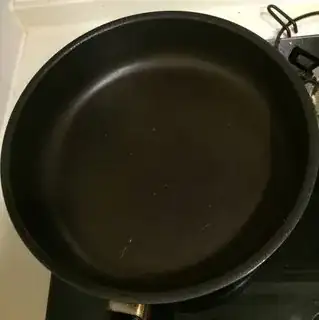According to The Food Lover's Companion, Fourth Edition, (2007) definition of cookware and bakeware materials, neither untreated copper nor untreated aluminum should ever be used for food storage or preparation. But it does go on to say that
most copper and aluminum cookware is lined with a nonreactive metal (stainless steel) to
make it usable with all foods,
thus making it safe so long as that lining remains in tact. In short, since you can detect that the lining of your pan has been compromised the pan should not be used for boiling or for any other form of cooking. Unlike copper, which according to the text can actually release a verdigris toxin, the problem with the use of untreated aluminum cookware is its ability to wreak havoc on the cosmetic appeal of certain foods. It will cause discoloration in dishes
containing eggs, wine, or other acidic ingredients.
And though it does not speak to any specific health concerns which may follow from the use of untreated aluminum cookware, (Here's an article which explains why that would be omitted), it does make clear that the superior aluminum cookware has undergone an electrochemical process called anodization which makes it extremely hard, low-stick (but not nonstick), and safely nonreactive to food acids unless one attempts to use them for food storage.
Ironware too, it says, is highly reactive with certain foods and must either be seasoned or enameled (aka La Creuset) to prevent of such problems. (Many of us sware by cast iron cookware as preferable to all else for most things.) It is interesting to note also that
light-colored enameled surfaces don't brown food as well as those that
are dark and will also eventually discolor with use.
Mention is given of nonstick cookware and the fact that less expensive varieties can flake off over time. And while it does not speak to the matter of biochemical safety for such products as Dupont Teflon, the fact that only through overheating can toxic gases be released is established by chemist Dr. Robert Woke in his book What Einstein Told His Cook: Kitchen Science Explained, (2008).
The definition essentially closes out saying,
The best of all possible worlds is clad metal stainless cookware
with a core of either aluminum or copper (both are excellent heat
conductors) sandwiched between two thin sheets of stainless steel.

